What to Do if Your Freezer Fails: Preserving Food in an Emergency
FNH-00080 View this publication in PDF form to print or download.
by Sarah R-P. Lewis
Though many people in Alaska preserve perishable foods by canning and drying, Alaska’s freezers are very well used and typically very full. Freezing foods is certainly the easiest method of food preservation, but not without pitfalls, especially in the small, remote communities of Alaska.
Freezers require power. In Alaska’s small communities, power can be quite expensive. But most people are willing to pay this cost to easily preserve their harvests of Alaska’s seasonal bounty, such as fish, game and berries.
Freezers can fail. Though very durable in general, every freezer will eventually fail. Parts and repair services are hard to come by in many communities, and shipping a new freezer might take more than a few days.
Power can fail. Power outages of more than two hours are rare nowadays, but in communities powered by generators, longer outages do happen and should be prepared for.
In general, a half-full freezer with a closed door can keep food cold enough for one day. A full freezer can keep it cold enough for two days. If you know or suspect that the outage will be longer than two days, you need to take steps to save your food. But the very first step you take should be prevention.
Step 1: Prevention and Preparation
Because food is expensive in Alaska, a full freezer is a major financial investment. But money is probably not the only consideration: Time and the cost of gear to harvest fish and other Alaska foods are also significant investments you need to protect.
Here are some things to do before your freezer or power fails to prevent or minimize food losses if it happens. The following is adapted from Colorado State University Extension Publication 9.357:
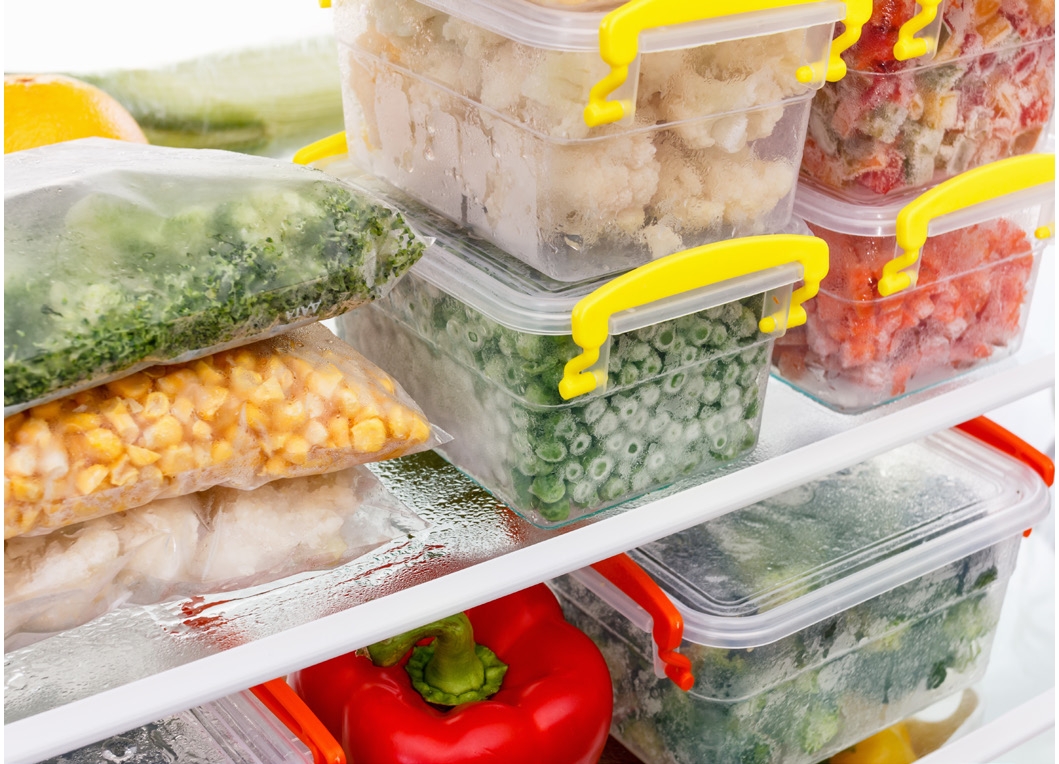
- Purchase a thermometer. Purchase a refrigerator/freezer thermometer and keep it in the freezer. If your freezer goes out for any reason and is off for some time, you can see how warm the freezer has become. Knowing the highest temperature that food has reached is the most important factor in determining whether or not the thawed food in your freezer is safe. Having a freezer thermometer also gives you more control over the quality of your frozen food. Keep the freezer temperature at zero degrees. TIP: Keep a bag of ice cubes visible in the freezer. If the freezer ever loses power and then regains it, the cubes will melt and refreeze. If you leave your home for a vacation or extended period, this might be the only way you’ll know there has been a failure and you can check your food for signs of spoilage before using it.
- Check power source. It’s best to plug your freezer into a dedicated outlet that is not connected to a circuit protected by a GFI (ground fault interrupter) device. GFIs are easily tripped by power surges, shutting off power to your freezer. Homes in small Alaska communities should consider having a backup generator large enough to power the freezer in addition to other potentially necessary items like heaters or a stove.
- Anticipate power failure. If for any reason you anticipate an extended power failure (e.g., forecasted snow storm, construction in the area), reduce the freezer temperature to –10 or –20°F. The colder the food, the more time it takes to thaw.
- Make sure your new freezer has an alarm. If you plan to purchase a new freezer, investigate models that have an alarm. No matter why the freezer is off, the alarm will sound to warn you if the temperature rises significantly. Alarms can also be purchased separately, including alarms that connect to smartphone apps.
- Lock the door. Keep the freezer door locked if there are small children in the household. This prevents children from leaving the door open. But make sure that it is a lock that cannot be accidentally engaged from inside the freezer.
- Check it periodically. Check the freezer occasionally to be sure it works properly — especially if the freezer is not in an area that you walk by daily. Make it part of your daily routine by keeping some regularly used items in it.
- Locate an ice source or alternate freezer site. Locate a source of ice or dry ice or a friend or local store with freezer space available for your use, if needed. If you locate these sources in advance, your stress will be lower if your freezer is out of operation for a few days.
- Be prepared to preserve your food. If there isn’t a source of ice or a spare freezer available, or if a community-wide power outage is possible, keep canning and other preservation supplies on hand to preserve food when there is no chance of using your freezer soon.
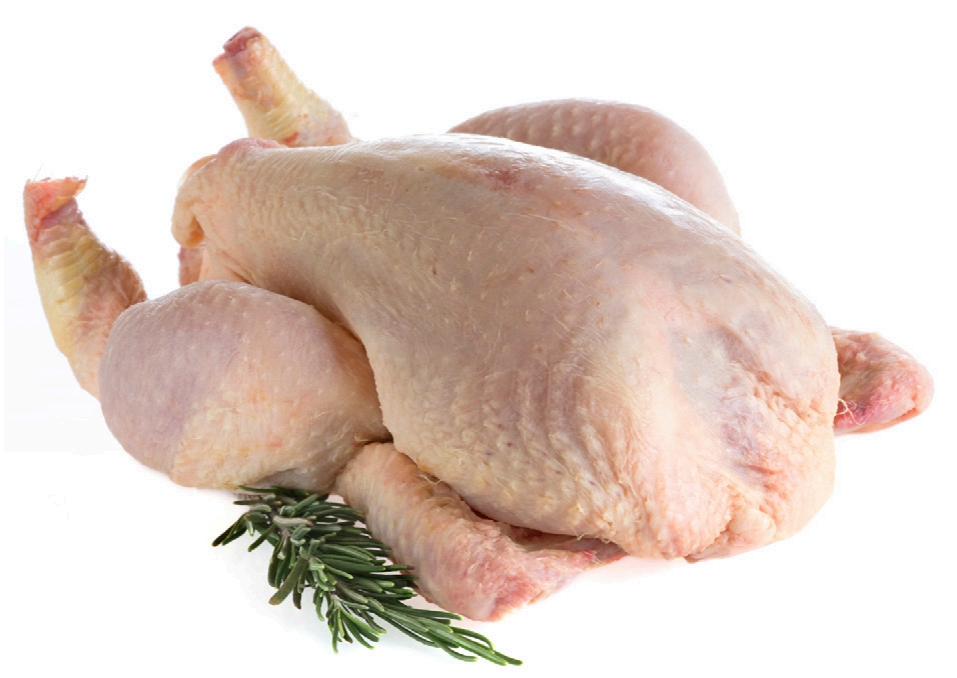
Step 2: Understand Food Safety Basics
Perishable foods, including milk, meat, poultry and eggs, should not be stored between 40°F and 140°F for more than two hours. To remain safe, these foods must either be cooked or refrozen before the two-hour mark has been reached.
If a food from a failed freezer still has ice crystals and feels as cold as if refrigerated, or if a thermometer in the freezer or an instant-read thermometer in the food still reads 40°F or lower, it can be safely refrozen, though the quality of many foods may decrease.
If refreezing is not possible because the freezer cannot be repaired in time and there is no alternate freezer site, the food must be cooked for immediate consumption or preserved for shelf-stable storage. See USDA charts at the end of this document for recommendations on when to discard refrigerated and frozen foods.
Step 3: Food Preservation
Most of the food preservation methods used in non-emergency situations can also be used if the freezer needs to be cleared out quickly. The methods best for your situation depend on the equipment and preservation staples you have available and what methods you have experience with. You do not want your first experience curing, smoking or canning meat and fish, for example, to be during an emergency. Learn about and practice any of the methods you think you will realistically use.
General Needs
Potable water: Many, though not all, of the preservation methods require potable water. Along with your household emergency supply of water, factor in water for cooking and preserving food. Base this extra amount of water on the size and contents of your freezer and the preservation methods you will likely use. For example, raw, frozen meats and fish do not require water to be pressure canned, but cooked meats and fish, vegetables, fruits and berries do.
Stove top: Electric burners will be fine if only the freezer is off-line, but if the home or community power is off-line a propane stove will be needed. Camp stoves and crab cookers work well. Keep extra propane on hand.
Coolers: Keep several on hand for temporary cold food storage or transportation.
Reference materials: Be sure to have tested preservation recipes, methods and processing times for the various types of food you will find in your freezer. For example:
- “So Easy to Preserve,” 6th edition, University of Georgia Cooperative Extension (available for purchase at your local UAF Cooperative Extension Service office)
- “The USDA Complete Guide to Home Canning,” http://nchfp.uga.edu/publications/publications_ usda.html
- Food preservation publications from the UAF Cooperative Extension Service, www.uaf.edu/ ces/pubs
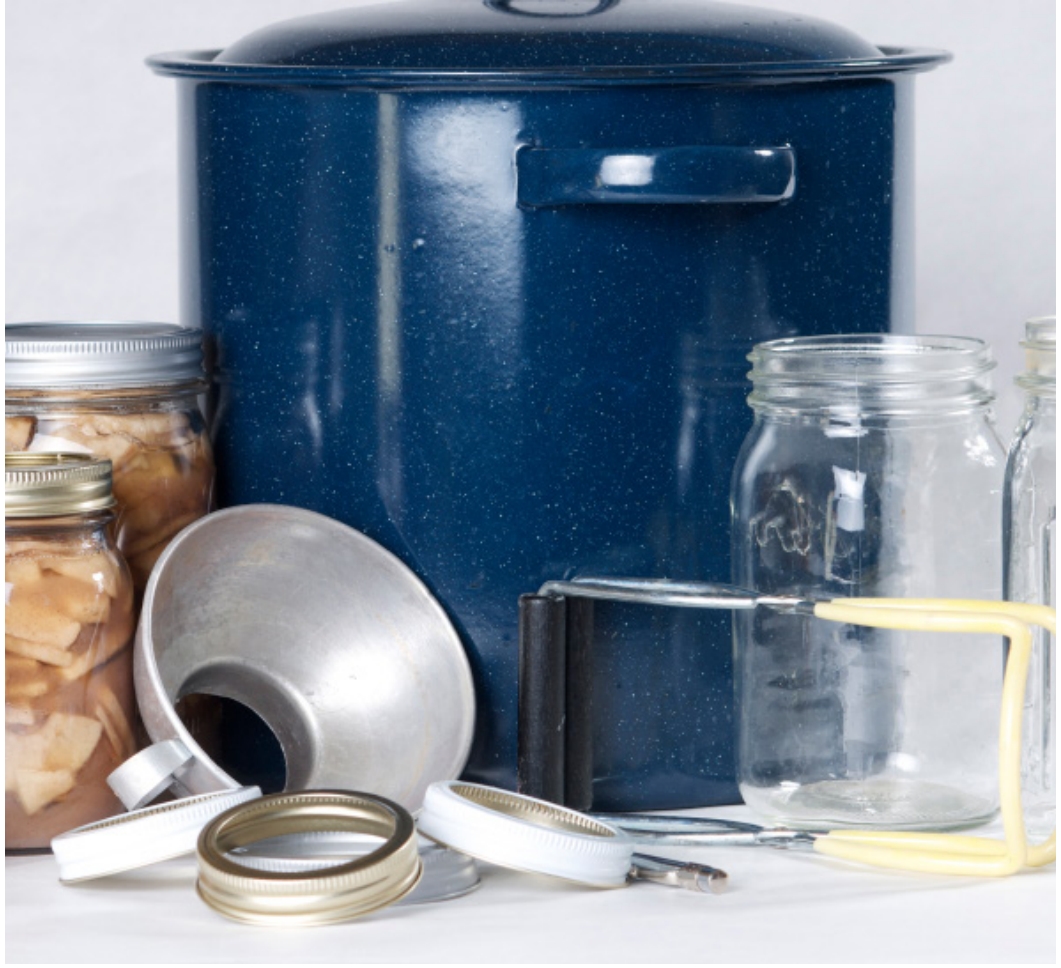
Water Bath Canning — to preserve fruits and berries in jars for shelf-stable storage
Required equipment in addition to general needs items:
- Jars specifically designed for home canning, from half-pint to quart-sized; two-part lids with unused flat lids
- A pot large enough to cover jars with water by one inch and still have room to boil
- A rack to hold jars off the bottom of the pot
- Canning utensils: jar funnel, jar lifter, cloth towels, hot pads
Required ingredients:
- Potable water
Optional ingredients:
- Sugar or honey
- Ascorbic acid or vitamin C tablets
- Powder and liquid pectin to make jams and jellies
Quick Pickling — to acidify vegetables with vinegar in jars and water-bath can for shelf-stable storage
Note: Previously frozen vegetables will not make high-quality pickles, but they can be safely preserved.
Required equipment in addition to general needs items:
- Water-bath canning equipment (see above)
- USDA tested recipes for pickling vegetables
Required ingredients:
- Potable water
- Canning and pickling salt
- White vinegar, 5 percent acidity
Optional ingredients:
- White sugar
- Ascorbic acid or vitamin C tablets
- Spices
Fermentation Pickling — to acidify vegetables with salt for medium-term cold storage, if available (not shelf stable)
Note: Previously frozen vegetables are safe to preserve but will not make high-quality
fermented pickles.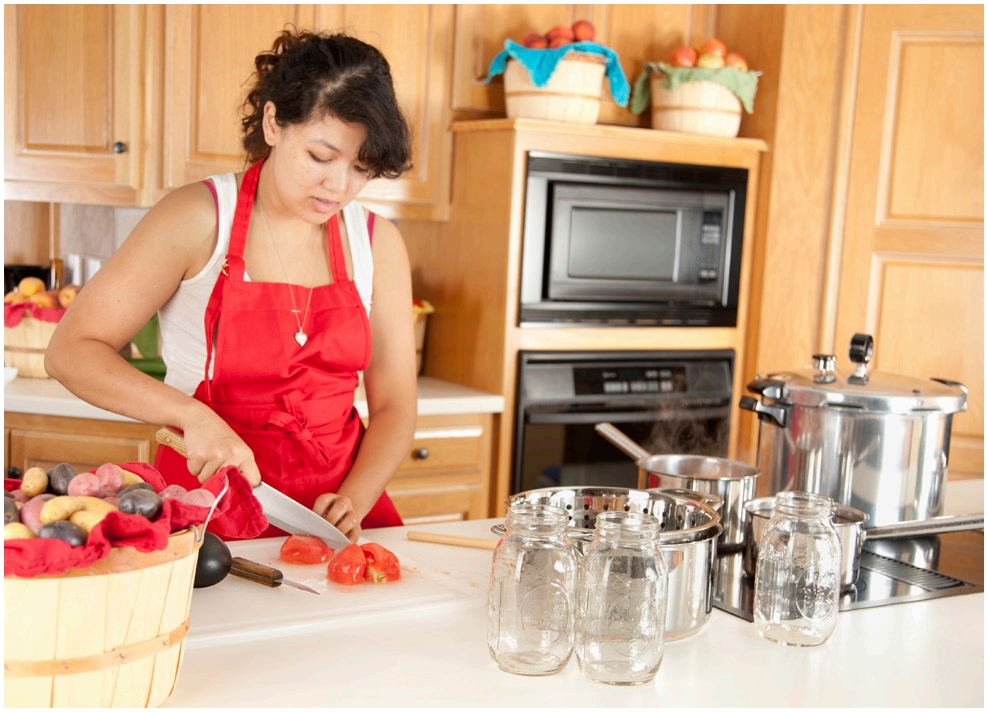
Required equipment in addition to general needs items:
- Food-grade buckets, jars, plastic containers
Required ingredients:
- Potable water
- Canning and pickling salt
Optional ingredients:
- Spices
Pressure Canning — the only safe way to preserve meat, fish, seafood, poultry, game and not pickled vegetables (and mixtures of them) in jars for shelf-stable storage
Required equipment in addition to general needs items:
- Jars specifically designed for home canning, from half-pint to quart-sized; two-part lids with unused flat lids
- Pressure canner (not a pressure cooker) with a dial gauge (tested annually) or a weighted gauge
- Rack to hold jars off the bottom of the pot
- Canning utensils: jar funnel, jar lifter, cloth towels, hot pads
- Manufacturer’s manual for use of the pressure canner
Required ingredients:
- Potable water
Optional ingredients:
- Canning and pickling salt
- Spices
- Stock
Drying — to preserve meat, fish and game for medium-term cold storage and fruits and vegetables for long-term, shelf-stable storage
Required equipment in addition to general needs items:
- A dehydrating system. The options range from screens for outdoor/sun drying (or drying in a well-ventilated heated room) to electric dehydrators and ovens. Throughout most of Alaska it is challenging to dry foods outdoors, even in the warmer seasons.
Required ingredients:
- Potable water
- Canning and pickling salt
Optional ingredients:
- Ascorbic acid
- Sugar or honey
- Brining and marinating ingredients
Meat Pickling, Curing and Smoking — to preserve meat, fish and game for medium-term cold storage
Required equipment in addition to general needs items:
- Food-safe pans, trays, containers
- A smoker
- Wood chips for the smoker
- Manufacturer’s manual for use of the smoker
Required ingredients:
- Potable water
- Canning and pickling salt
- Curing nitrates
Optional ingredients:
- Brining and marinating ingredients
Final note: A few minutes of preparation and a bit of food preservation knowledge can be worth 100 pounds of frozen sockeye!
For more information, contact Sarah R-P. Lewis at 907-523-3280, ext. 1 or sarah.lewis@alaska.edu.
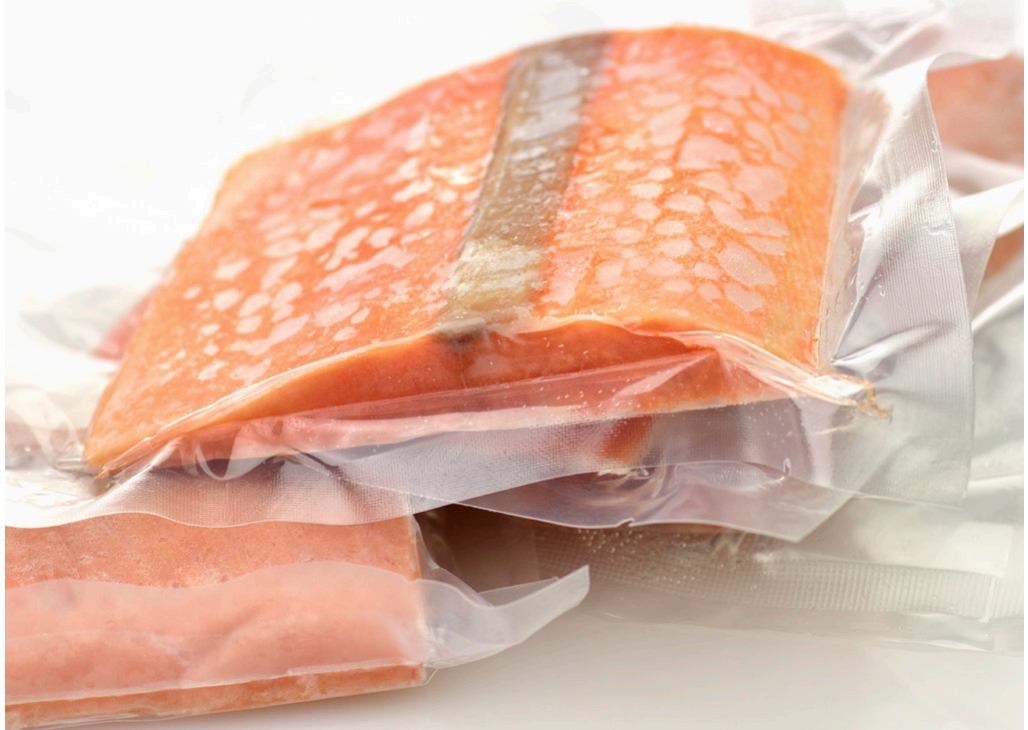
The following charts are from the USDA Food Safety and Inspection Service publication “Keeping Food Safe During an Emergency.”
Refrigerated Foods: When to Save and When to Throw it Out
| FOOD | Held above 40°F for over 2 hours |
|---|---|
| MEAT, POULTRY, SEAFOOD | |
| Raw or leftover cooked meat, poultry, fish or seafood; soy meat substitutes | Discard |
| Thawing meat or poultry | Discard |
| Meat, tuna, shrimp, chicken, or egg salad | Discard |
| Gravy, stuffing, broth | Discard |
| Lunch meats, hot dogs, bacon, sausage, dried beef | Discard |
| Pizza, with any topping | Discard |
| Canned hams labeled “Keep Refrigerated” | Discard |
| Canned meats and fish, opened | Discard |
| CHEESE | |
| Soft cheeses: blue/bleu, Roquefort, brie, Camembert, cottage, cream, Edam, Monterey Jack, ricotta, mozzarella, Muenster, Neufchatel, queso blanco, queso fresco | Discard |
| Hard cheeses: cheddar, colby, Swiss, Parmesan, provolone, Romano | Safe |
| Processed cheeses | Safe |
| Shredded cheeses | Discard |
| Low-fat cheeses | Discard |
| Grated Parmesan, Romano, or combination (in can or jar) | Safe |
| DAIRY | |
| Milk, cream, sour cream, buttermilk, evaporated milk, yogurt, eggnog, soy milk | Discard |
| Butter, margarine Safe Baby formula, opened | Discard |
| EGGS | |
| Fresh eggs, hard-cooked in shell, egg dishes, egg products | Discard |
| Custards and puddings | Discard |
| CASSEROLES, SOUPS, STEWS | Discard |
| FRUITS | |
| Fresh fruits, cut Discard Fruit juices, opened | Safe |
| Canned fruits, opened | Safe |
| Fresh fruits, coconut, raisins, dried fruits, candied fruits, dates | Safe |
| SAUCES, SPREADS, JAMS | |
| Opened mayonnaise, tartar sauce, horseradish | Discard if above 50°F for over 8 hours |
| Peanut butter | Safe |
| Jelly, relish, taco sauce, mustard, catsup, olives, pickles | Safe |
| Worcestershire, soy, barbecue, Hoisin sauces | Safe |
| Fish sauces (oyster sauce) | Discard |
| Opened vinegar-based dressings | Safe |
| Opened creamy-based dressings | Discard |
| Spaghetti sauce, opened jar | Discard |
| BREAD, CAKES, COOKIES,PASTA, GRAINS | |
| Bread, rolls, cakes, muffins, quick breads, tortillas | Safe |
| Refrigerator biscuits, rolls, cookie dough | Discard |
| Cooked pasta, rice, potatoes | Discard |
| Pasta salads with mayonnaise or vinaigrette | Discard |
| Fresh pasta | Discard |
| Cheesecake | Discard |
| Breakfast foods — waffles, pancakes, bagels | Safe |
| PIES, PASTRY | |
| Pastries, cream filled | Discard |
| Pies — custard, cheese filled, or chiffon; quiche | Discard |
| Pies, fruit | Safe |
| VEGETABLES | |
| Fresh mushrooms, herbs, spices | Safe |
| Greens, pre-cut, pre-washed, packaged | Discard |
| Vegetables, raw | Safe |
| Vegetables, cooked; tofu | Discard |
| Vegetable juice, opened | Discard |
| Baked potatoes | Discard |
| Commercial garlic in oil | Discard |
| Potato salad | Discard |
Frozen Foods: When to Save and When to Throw it Out
| FOOD | Still contains ice crystals and feels as cold as if refrigerated | Thawed. Held above 40°F for over 2 hours |
|---|---|---|
| MEAT, POULTRY, SEAFOOD | ||
| Beef, veal, lamb, pork, and ground meats | Refreeze | Discard |
| Poultry and ground poultry | Refreeze | Discard |
| Variety meats (liver, kidney, heart, chitterlings) | Refreeze | Discard |
| Casseroles, stews, soups | Refreeze | Discard |
| Fish, shellfish, breaded seafood products | Refreeze. However, there will be some texture and flavor loss. | Discard |
| DAIRY | ||
| Milk | Refreeze. May lose some texture. | Discard |
| Eggs (out of shell) and egg products | Refreeze | Discard |
| Ice cream, frozen yogurt | Discard | Discard |
| Cheese (soft and semisoft) | Refreeze. May lose some texture. | Discard |
| Hard cheeses | Refreeze | Refreeze |
| Shredded cheeses | Refreeze | Discard |
| Casseroles containing milk, cream, eggs, soft cheeses | Refreeze | Discard |
| Cheesecake | Refreeze | Discard |
| FRUITS | ||
| Juices | Refreeze | Refreeze. Discard if mold, yeasty smell, or sliminess develops. |
| Home or commercially packaged | Refreeze. Will change texture and flavor. | Refreeze. Discard if mold, yeasty smell, or sliminess develops. |
| VEGETABLES | ||
| Juices | Refreeze | Discard after held above 40°F for 6 hours. |
| Home or commercially packaged or blanched | Refreeze. May suffer texture and flavor loss. | Discard after held above 40°F for 6 hours. |
| BREADS, PASTRIES | ||
| Breads, rolls, muffins, cakes (without custard fillings) | Refreeze | Refreeze |
| Cakes, pies, pastries with custard or cheese filling | Refreeze | Discard |
| Pie crusts, commercial and homemade bread dough | Refreeze. Some quality loss may occur. | Refreeze. Quality loss is considerable. |
| OTHER | ||
| Casseroles — pasta, rice-based | Refreeze | Discard |
| Flour, cornmeal, nuts | Refreeze | Refreeze |
| Breakfast items — waffles, pancakes, bagels | Refreeze | Refreeze |
| Frozen meal, entree, specialty items (pizza, sausage and biscuit, meat pie, convenience foods) | Refreeze | Discard |
Food Preservation Needs
| Water bath canning | Quick/Vinegar Pickling | Fermentation/ salt pickling | Pressure canning | Dehydrating vegetables & fruit | Dehydrating meat & fish | Pickling, curing, smoking meat and fish | |
|---|---|---|---|---|---|---|---|
| Potable water | X | X | X | X | X | X | X |
| Stove top or burner(s) | X | X | X | X | X | ||
| Canning/canner manuals | X | X | X | ||||
| Canning jars with new flat lids | X | X | X | ||||
| Water-bath canning pot with bottom rack & lid | X | X | |||||
| Canning utensils | X | X | X | ||||
| Canning and pickling salt | X | X | X | X | |||
| Vinegar, 5% acidity | X | ||||||
| Food-grade preparation containers | X | X | |||||
| Food-grade storage containers or bags | X | X | X | X | |||
| USDA/Extension tested recipes | X | X | |||||
| Pressure canner with bottom rack | X | ||||||
| Dehydrator or oven | X | X | |||||
| Smoker and wood chips | X | ||||||
| Curing nitrates | X |
Sarah R-P. Lewis, Extension Faculty, Health, Home and Family Development.
New August 2020
